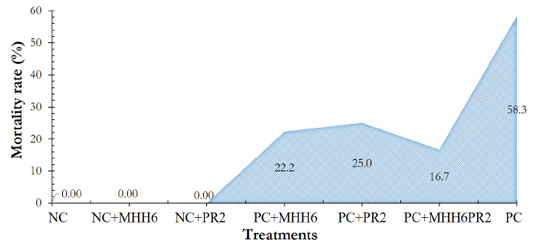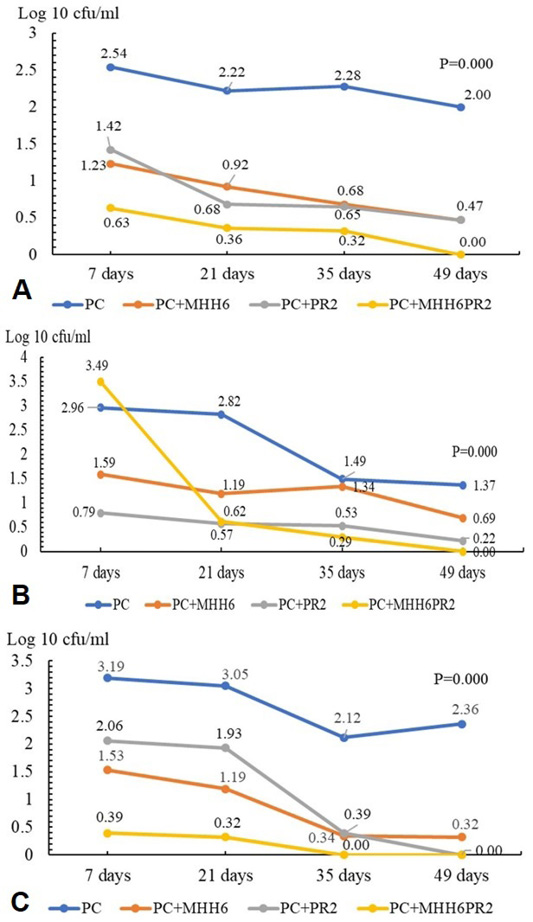Application of Phages to Control Escherichia coli Infections in Native Noi Chickens
Application of Phages to Control Escherichia coli Infections in Native Noi Chickens
Luu Huynh Anh1, Huynh Tan Loc2, Nguyen Hong Xuan3, Le Minh Thanh1, Trinh Thi Hong Mo4, Ly Thi Thu Lan5, Nguyen Trong Ngu1*
The efficacy of a bacteriophage on mortality rate of chicken E. coli challenged. NC: negative control, without E. coli, without phage; PC: positive control, E. coli challenged, without phages; NC+MHH6 and NC+PR2: negative control plus MHH6 or PR2 phage, respectively; PC+MHH6, PC+PR2: positive control plus MHH6 or PR2 phage, respectively; PC+MHH6PR2: positive control plus both MHH6 and PR2 phages.
Number of E. coli bacteria in heart, liver, and spleen organs over 49 days of infection. (a) Heart; (b) Liver; (c) spleen; PC: positive control, E. coli challenged, without phages; PC+MHH6, PC+PR2: positive control plus MHH6 or PR2 phage, respectively; PC+MHH6PR2: positive control plus both MHH6 and PR2 phages.







